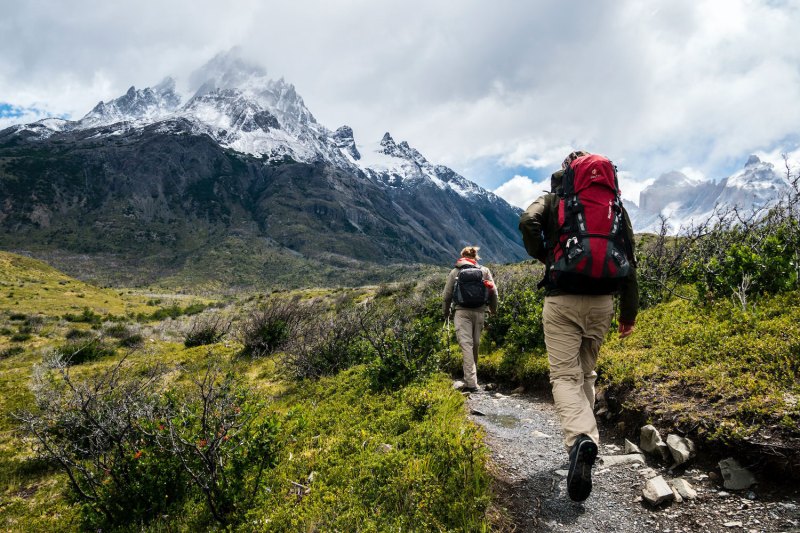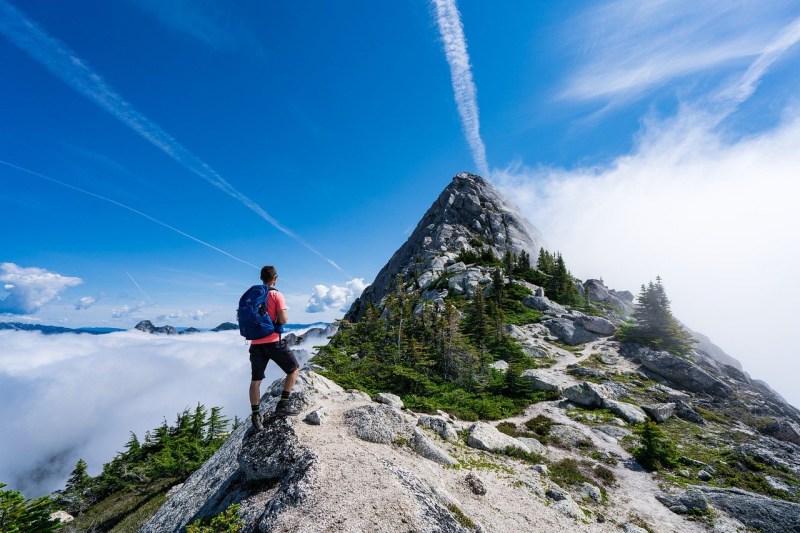
Completing a long-distance trail is the ultimate aim for many hikers. While long-distance means different things to different people — for some, it’s being out ten hours at a time, while for others, it’s hitting the AP trail over the course of multiple months — there are some universal truths for anyone who wants to push their hiking further than ever before. I’ll look at plenty of these universal truths shortly, but if there’s one that you can’t escape, it’s this; this hike is going to be tough.
Endurance events like a long-distance hike take planning and training — no one thinks you can run an ultra-marathon without training, and long-distance hiking trails can be just as tough and even tougher. When it comes to how to prepare for hiking these long distances, most people focus on the physical attributes they need to develop. These are important, sure, but I like to think of my preparation as being a three-pronged approach, each of which is just as important as the others; physical, tactical, and mental. Here’s how I prepare for
Let’s get physical
The physical attributes of training can be broken down here into two main categories; cardio exercises and weight training. To build your aerobic baseline — your cardio fitness — you should spend sustained periods of time in low-to-mid heart rate zones, either running, walking, or biking. While it’s important to get your heart rate elevated to pump the blood around your body, getting it too high can actually be counterproductive to developing your cardio baseline. You want to stay in what your smartwatch would tell you is zone two — can you hold a conversation but feel a bit breathy? Perfect. Mix it up, and don’t forget to add some hills into your training; just remember to control your breathing and slow down if you have to.
Lifting weights helps reduce the strain and stress on the body by building up the big muscle groups and preparing the body for the repetitive motions and strains of hiking. Of course, the legs are the primary focus for

How do you prepare tactically for a long-distance hike?
What does it mean to tactically prepare yourself for your long-distance hike? Well, in the same way as training your body alleviates some of the physical strain, tactical planning can alleviate some of the mental strain that comes from hitting the trail. Your tactical plan should include elements like navigation planning, making sure you know how to use all of your hiking equipment, that you’ve got the right tent with you for the weather that’s forecast — come to that, making sure you know the weather forecast. Do you know where you can get water along the trail? What about restocking food? Do you have a home contact looking out for you from the comfort of their sofa?
Basically, what I mean here is that you should set yourself up for success. The more you know in advance and the more questions you have answered, the more focus you can give you enjoying your time on the trail and taking in the scenery. Some people even go as far as fronting up to potential issues before their trip and having a plan to deal with them. This might seem negative, but it can prevent your trip from becoming derailed by a blown-out hiking boot or a blister. Make a plan. This plan should be malleable and open to change, but at least you’ll be starting from somewhere, not just fumbling your way through your hike.

When the going gets tough
The tough draw on their mental strength. This is going to get tough, it might even hurt, and there might be times when you want to quit. Long-distance hikes can be the ultimate in type two fun — great when you look back on them but tough at the time — but no great success ever came without a little sacrifice along the way. Some people call this the pain cave, or hurt locker, or you hear some runners talk about ‘the wall.’ This is that mental place you go to when things are tough, where you prove to yourself what you’re capable of and what you’re willing to go through to achieve your goal. This is a by-product of testing your endurance and is a key part of your training.
It’s not just phsyical pain that puts you in this place. It might be a mental strain from perpetual rain, a longing for home comforts and friends, or a fear of the unknown. To push through and see the other side, you need to arm yourself with mental coping mechanisms that you can call on when you recognize the cave calling. I can’t say for sure what will work for you because everyone is different, but often people find that accepting and even making peace with their struggle is a great starting point. From there, you might need to sing, talk to yourself and tell yourself you’ve got this, get into a rhythm or meditative-like hike, or even laugh at how ridiculous your whole situation is. Remind yourself why you’re here; the juice is worth the squeeze.

Enjoy the journey, and don’t forget to look up
Hopefully, I’ve not put you off with all that talk of mental difficulties, and you still want to go on your long-distance hike; you should, trust me it’s worth it. My final bit of advice is some to take with you on your hike, and that is to enjoy what’s around you. All of your hard work has led you to this moment and to being here, on the trail, exactly where you wanted to be, and doing exactly what you want to be doing. Look up, see the view, smell the flowers, chat to the locals, try to cheese. All of these things.
Don’t get too focused on the trail ahead to enjoy the trail that you’re on. The better prepared you are phsyically, tactically, and mentally, the more you can relax about what’s to come and be fully immersed in what you’re doing. Preparation prevents poor performance and a long distance trail requires preparation.



